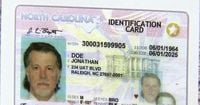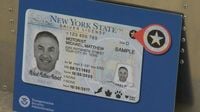Travelers in the United States are facing a critical deadline as the enforcement of the REAL ID requirement approaches. Starting May 7, 2025, adults boarding domestic flights will no longer be able to use their old driver's licenses as identification. This change, mandated by the Department of Homeland Security (DHS), aims to enhance security standards for air travel and access to federal facilities, following recommendations from the 9/11 Commission.
The REAL ID Act, passed by Congress in 2005, establishes minimum security standards for state-issued driver's licenses and identification cards. To comply, these IDs must feature a star marking on the upper half of the card. Without this compliant identification, travelers may face significant delays or even be barred from entering TSA security checkpoints.
As the deadline looms, many are scrambling to obtain their REAL IDs. "It's been a long time coming, and people around the country and the territories of the U.S. have had 20 years to get their REAL ID," said TSA spokesperson Patricia Mancha. With only a short time left, the urgency is palpable, especially since the TSA estimates that on any given day, between 2.5 to 3 million passengers pass through security checkpoints.
For those unsure if their identification is REAL ID-compliant, the process is straightforward. A compliant ID will have a star marking, which can vary by state. For example, California's REAL IDs feature a gold grizzly bear with a white star cutout, while New York's will display a star or the U.S. flag. If your ID lacks this marking, it is not compliant and will not be accepted for domestic flights or access to certain federal facilities.
Obtaining a REAL ID varies by state. In Texas, for instance, most driver's licenses are already compliant, while in South Carolina, residents must provide proof of identity, residency, and legal name changes if applicable. The South Carolina Department of Motor Vehicles (SCDMV) allows residents to apply online if their documents are already on file, whereas others may need to visit a DMV branch in person.
Despite the impending enforcement, travelers without a REAL ID can still fly by presenting alternative forms of identification. The TSA accepts various IDs, including U.S. passports, state-issued Enhanced Driver's Licenses (EDL), and even tribal IDs. However, travelers are advised to arrive at the airport significantly earlier than usual—two to three hours ahead of their flight—to allow for the identity verification process. This added time is crucial, as TSA agents may need to conduct additional screenings for those without a REAL ID.
"If we have 100 travelers who don't have a REAL ID and you're number 99 on that list, we can't guarantee that we will be able to verify your identity within the time allotted for you to get to your gate and board your flight," Mancha explained.
Children under the age of 18 are exempt from this requirement and do not need a REAL ID to fly domestically. However, parents should still ensure they have the necessary documentation for their children, such as a birth certificate or school ID.
The implementation of the REAL ID requirement has faced multiple delays since its inception. Originally set to take effect in 2008, the deadline has been pushed back several times, most recently due to the COVID-19 pandemic and subsequent backlogs at DMV offices. Now, with the deadline just days away, many states are experiencing long lines as residents rush to secure their compliant IDs.
In Pennsylvania, for instance, only about a third of residents have obtained a REAL ID, while other states like Texas and North Carolina report higher compliance rates. The Pennsylvania Department of Transportation noted that the state only began issuing REAL IDs in 2019, despite the law being established in 2005.
As travelers prepare for the upcoming changes, it is essential to check the status of your identification. The DHS provides a REAL ID map on its website, allowing users to click on their state for specific information regarding the application process and requirements.
For those who miss the May 7 deadline, applications for REAL IDs can still be submitted afterward. However, travelers should be aware that they may encounter issues when trying to travel domestically or access certain federal buildings without a compliant ID.
In summary, the REAL ID requirement is set to reshape the travel landscape in the U.S. as it becomes mandatory for domestic flights and access to federal facilities. With the clock ticking down to the May 7 deadline, ensuring compliance is crucial for all travelers looking to avoid disruptions to their summer travel plans.






